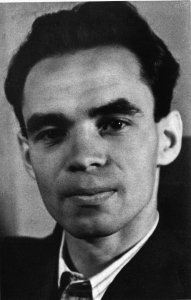
The First Republic was a parliamentary republic briefly established after the dissolution of the Kingdom of Hungary on 1 February 1946.
In elections held in November 1945, the Independent Smallholders' Party won 57% of the vote while the Hungarian Communist Party received support from only 17% of the population. The Soviet commander in Hungary, Marshal Kliment Voroshilov, refused to allow the Smallholders Party to form a government. Instead Voroshilov established a coalition government with the communists. Under Parliament, the leader of the Smallholders, Zoltán Tildy, was named president and Ferenc Nagy prime minister in February 1946. Mátyás Rákosi became deputy prime minister.
László Rajk became minister of the interior and in this post established the security police. In February 1947 the police began arresting leaders of the Smallholders Party and the National Peasant Party. Several figures in both parties escaped abroad.
By 1947, the Communists had all but emasculated the other parties in the coalition, and became the largest single party in elections held that year. The Communists were the dominant partners in the coalition People's Independence Front government. Nagy was replaced as prime minister by the more pliable Lajos Dinnyés.
By the summer of 1948, the Communists had dropped all pretense of democracy. The Social Democratic Party effectively ceased to exist as an independent organization.
The Republic of Hungary ended in June 1948, when the Social Democrats were forced to merge with the Communists as the Hungarian Working People's Party. In August, Tildy was forced out as president in favour of Social Democrat-turned-Communist Árpád Szakasits. At the 1949 elections, voters were presented with a single list from the Communist-controlled Independent People's Front, which carried 95 percent of the vote.